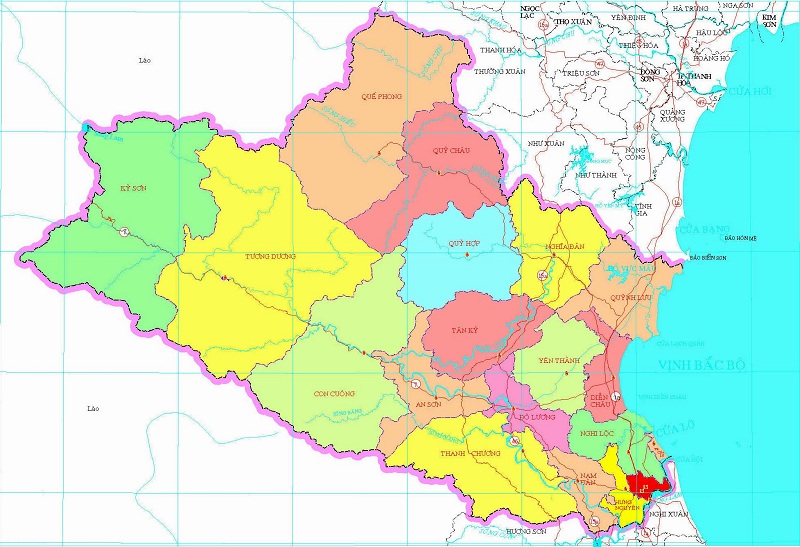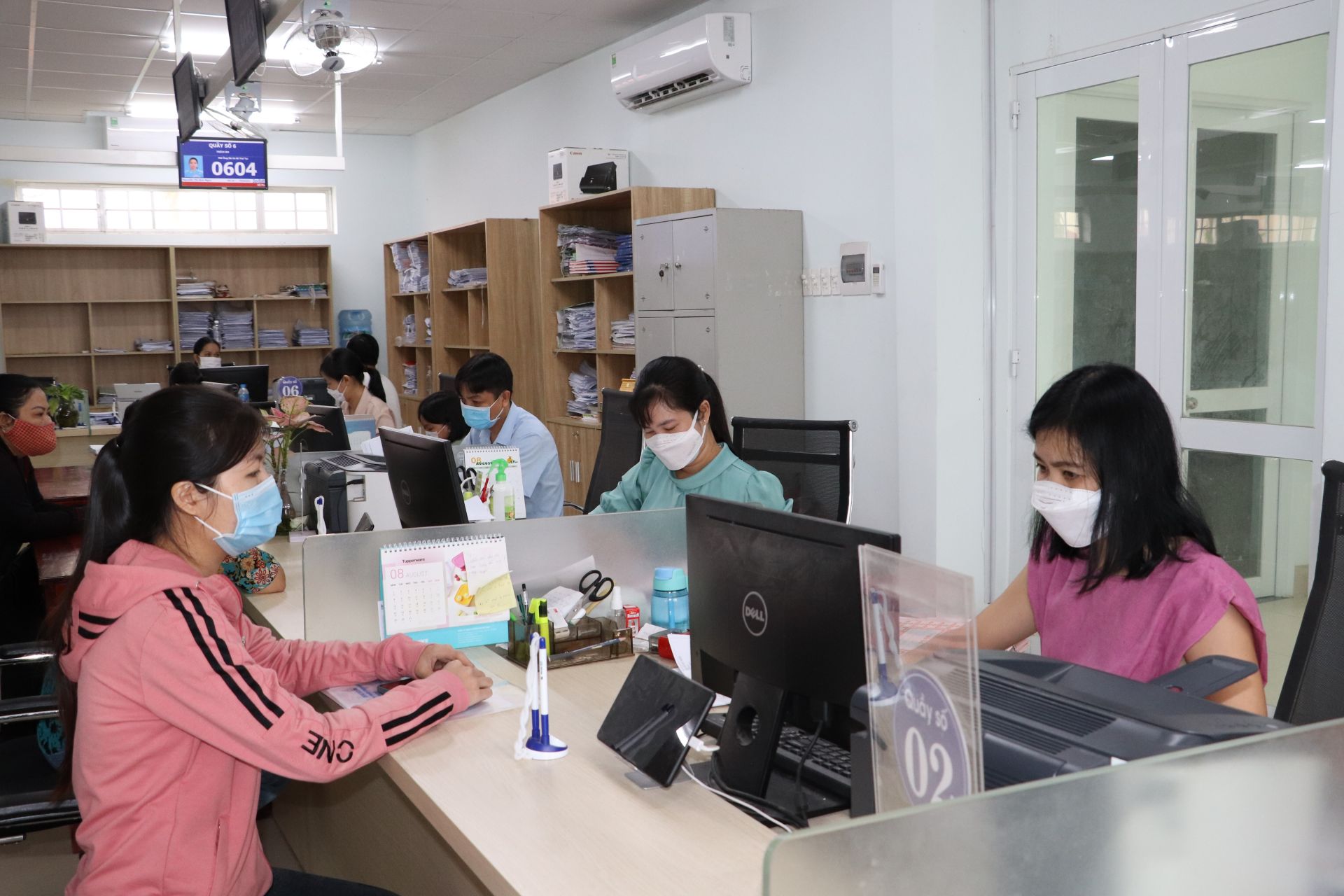By 2030, to develop Nghe An into a prosperous province of the country in Vietnam
By 2030, what kind of province will Nghe An province be planning to become in the country? – Phuoc Dat (Nghe An)

By 2030, to develop Nghe An into a prosperous province of the country in Vietnam (Internet image)
Regarding this issue, LawNet would like to answer as follows:
On September 14, 2023, the Prime Minister issued Decision 1059/QD-TTg approving the Planning of Nghe An province for the period 2021–2030, with a vision to 2050
By 2030, to develop Nghe An into a prosperous province of the country in Vietnam
Specifically, the development goals until 2030 of Nghe An province are as follows:
* Overall objectives
Build Nghe An to become a good province of the country with rapid and sustainable economic development, imbued with the cultural identity of Vietnam and Nghe An; is the center of the North Central region in terms of trade, health, education and training, science and technology, industry, and agriculture, applying high technology; have a synchronous infrastructure system, gradually modernized and adapted to the sea and climate; the people's material and spiritual lives are improved; Cultural and historical values are preserved and promoted; the ecological environment is protected, preserving nature and biodiversity; National defense and security are firmly guaranteed.
* Detailed objectives
- Economic:
+ The average growth rate of total product in the province (GRDP) in the period 2021–2030 will reach about 10.5 - 11.0%/year. In the GRDP structure, the proportion of industry - construction accounts for 42.0 - 42.5%; services account for 39.0 - 39.5%; Agriculture, forestry, and fisheries account for 13.5–14.0%; and product taxes minus product subsidies account for 4.5–5.0%.
+ GRDP per capita in 2030 is about 7,500 - 8,000 USD.
+ The processing and manufacturing industry accounts for over 24% of GRDP.
+ Labor productivity increases by an average of 10-11%/year.
+ State budget revenue in the area increases by an average of about 12%/year.
+ Mobilizing investment capital for social development in the period 2021 - 2030 is about 1,650 trillion VND.
- Regarding society:
+ Striving for the rate of cultural villages and towns to reach 78%.
+ The natural population growth rate in the period 2021–2030 is 0.98%/year.
+ The average life expectancy of people reaches 75 years.
+ The rate of trained workers reached 77%, including 37.8% with certificates; On average, it creates jobs for over 45 thousand workers each year.
+ The rate of schools meeting national standards is over 80%.
+ The number of doctors per 10,000 people reached over 15 doctors; The number of hospital beds per 10,000 people reached over 50 beds.
+ The rate of multidimensional poverty in households decreased by an average of 0.5 - 1.5%/year, and in mountainous areas by an average of 1.5 - 2.0%/year.
+ Reducing the rate of malnutrition in children under 5 years old to 12%. The rate of health insurance participants reaches at least 95% of the population; the rate of people participating in social insurance is about 39%.
+ Striving to have 70% of district-level administrative units complete construction tasks and meet new rural district standards. The rate of communes meeting new rural standards reached 90%; of which 50% meet advanced new rural standards and 15% meet model new rural standards.
- Regarding urban areas and infrastructure:
+ Striving for an urbanization rate of about 40–45%; The average urban housing area reaches 32 - 35 m2/person; Infrastructure in urban areas is invested synchronously and modernly.
+ Smooth and safe transportation infrastructure; irrigation infrastructure, dykes, lakes and dams ensure water sources for production and daily life and proactively drain water; ensure electricity needs for production and daily life; modern communication, internet, and terminal systems; Social infrastructure meets development needs.
- Regarding environment:
+ Forest coverage rate is stable at 58%.
+ The proportion of the urban population provided with clean water through the centralized water supply system reached 100%.
+ The proportion of the rural population using clean water that meets standards reaches 60%.
+ The rate of collection of domestic solid waste generated in urban areas reaches 99%, in rural areas, it reaches over 80%. The rate of collected household solid waste treated to meet environmental protection requirements is 95%.
+ The rate of urban domestic wastewater collected and treated meeting prescribed standards is 100% for class I urban areas; 70% for urban areas of type IV and higher and 50% for urban areas of type V.
+ Strive to have 100% of industrial parks have centralized wastewater treatment systems that meet environmental standards, and the rate of hazardous waste collected and treated reaches 99%.
- Regarding national defense and security: build a solid defense area; The armed forces are comprehensively strong and capable of meeting mission requirements.
More details can be found in Decision 1059/QD-TTg, which takes effect from the date of signing.
- Key word:
- prosperous province
- in Vietnam
- Number of deputy directors of departments in Vietnam in accordance with Decree 45/2025/ND-CP
- Cases ineligible for pardon in Vietnam in 2025
- Decree 50/2025 amending Decree 151/2017 on the management of public assets in Vietnam
- Circular 07/2025 amending Circular 02/2022 on the Law on Environmental Protection in Vietnam
- Adjustment to the organizational structure of the Ministry of Health of Vietnam: Certain agencies are no longer listed in the organizational structure
- Vietnam aims to welcome 22-23 million international tourists in Vietnam in 2025
-

- Emergency response and search and rescue organizations ...
- 10:29, 11/09/2024
-

- Handling of the acceptance results of ministerial ...
- 09:30, 11/09/2024
-

- Guidance on unexploded ordnance investigation ...
- 18:30, 09/09/2024
-

- Sources of the National database on construction ...
- 16:37, 09/09/2024
-

- General regulations on the implementation of administrative ...
- 11:30, 09/09/2024
-

- Notable documents of Vietnam in the previous week ...
- 17:51, 12/03/2025
-

- Notable documents of Vietnam in the previous week ...
- 17:29, 05/03/2025
-

- Number of deputy directors of departments in Vietnam ...
- 15:04, 05/03/2025
-

- Cases ineligible for pardon in Vietnam in 2025
- 14:43, 05/03/2025
-

- Decree 50/2025 amending Decree 151/2017 on the ...
- 12:00, 05/03/2025
 (1).png)
 Article table of contents
Article table of contents
